

Predicting risk isn’t what it used to be. With large-scale natural disasters occurring more frequently and resulting in more damage than ever before, the insurance industry is at a crossroad for how to deal with unpredictable and catastrophic events. Will it take a hint from previous times when natural hazards nearly (or did) destroy the fabric of the system built to protect society from financial ruin?
The insurance industry’s underlying assumption
The insurance industry is built on the premise that insurers can predict risk with enough accuracy, spread risk over a large enough pool, and price premiums appropriately enough to result in a profitable business model. Yes, insurance is about helping people recover from financial losses when they face unexpected and costly events, but the industry wouldn’t exist if it didn’t provide revenue to its workers and shareholders.
And historically, this model has worked well for the industry (as seen on a chart with the industry’s net profits between 2016 and 2020, just as a small example). Despite common gripes from policyholders about not getting claims paid the way they’d like, the industry does shell out billions of dollars each year to its consumers.
The Insurance Information Institute (I.I.I.) reports, for example, over $747 million in claims and benefits paid out for life insurance and annuities in 2020, over $881 million paid out just for dog-related homeowners claims in 2021, and around $160 billion in auto claims paid by the industry in 2020. That’s no small chunk of change! So, while nothing’s perfect, the insurance industry has managed pretty well to both repay covered losses and provide a profitable career to its over-six-million workers.
How do insurance companies make money?
Insurance companies adjust their rates and recalculate premiums based on historical data and future predictive modeling to make sure they don’t end up underwater with more claims being paid out than premium dollars coming in.
It’s logical that people and businesses with higher risk of losses will pay higher premiums. And, if someone’s risk classification changes, the insurance company can adjust a policy accordingly. This is the magic of insurance actuaries, those professionals who’re responsible for analyzing and modeling risk to give insurers a framework for how to charge premiums that will be more than enough to cover actual claims.
This idea that insurance companies must bring in more money in premiums than they pay out in claims, and that they need enough cash in the bank to float them in case of major, unexpected losses, is known as solvency. There’ve always been insurance companies that couldn’t maintain solvency for one reason or another. The U.S. has regulations in place to protect consumers by requiring a certain level of solvency – or else! Guaranty associations, for example, are government-backed funds intended to bail out consumers if their insurance company isn’t able to pay for covered losses. But what happens if even the guaranty association goes broke?
The rise of mega-disasters
Unfortunately, we’re now seeing more instances of P&C insurers falling into insolvency, thanks in no small part to climate change, more extreme weather, and more frequent and severe natural disasters. This isn’t simply due to poor planning or employing actuaries who’re bad at their jobs! In large part, mother nature is becoming more unpredictable and the insurance industry hasn’t yet caught up – or in some cases may be unable to catch up – by charging high enough premiums to cover this “new normal.”
If you’re not convinced things really are that different now than they’ve been in the past, consider this historical data from the III:
- In 2009, there were 127 fatalities caused by a combination of all tracked weather events (severe storms, wildfires, drought, heatwave, flooding, tropical cyclones, etc.) compared to around 770 fatalities in 2021.
- In 2009, there was about $17 billion in total damages compared to $169 billion in 2021.
- In 2009, there was about $10 billion of insured losses compared to $92 billion of insured losses in 2021.
This isn’t just an anomaly between two random years. The I.I.I.’s data show a trend of increasing fatalities and monetary damages, with 2018 being particularly rough.
Global insurer Munich Re also reports, “Worldwide, natural disasters caused substantially higher losses in 2021 than in the two previous years.” And climate research indicates these types of disasters are growing more common (and more expensive), not less. And for one more scary stat, between 2019 and 2021 there were 56 individual weather and climate catastrophes with insured losses over $1 billion each.
The importance of being adequately insured
Carrying enough insurance for our new, more hazardous, and more expensive world is important for consumers and insurers alike.
From a policyholder’s standpoint, if you don’t have any, or enough, or the right type of insurance on your valuable assets, you can easily be left with major out-of-pocket costs to repair or rebuild after a disaster. Many Americans simply don’t have the money to recover if something as large as their car or home were destroyed and they didn’t have enough insurance to fully cover the loss. This is the case for many victims of Colorado’s recent Marshall Fire, where 92 percent of homes were underinsured and will leave homeowners with large bills or debts to rebuild a home similar to the one they lost.
From an insurance company’s perspective, selling enough policies with enough coverage to enough consumers can help offset major losses (thus preventing insolvency) by providing more premium income. It’s also important for insurers to accurately assess risk levels and price policies accordingly so they don’t get surprised when a “low risk” area all of a sudden suffers from a flood or wildfire that “wasn’t supposed to happen.” This was the case for insurers during Florida’s 1992 Hurricane Andrew, and the reason why eight insurance companies went under, leaving Florida’s Guaranty Association to pick up the tab.
We may be headed in this direction, meaning insurers will need to continually adjust insurance premium prices to reflect the real cost of today’s risks. S&P Global Market Intelligence reported that, for the first time in five years, the property and casualty insurance sector saw a drop in its expense ratio, driven primarily by a large increase in premiums. No one wants to see their insurance premiums go up, but the fact is, if the insurance industry doesn’t price policies high enough to cover the extremely large potential losses, insurers won’t have enough money to pay claims when these events happen.
Catastrophic losses no one thought possible
To illustrate just how much of a cat-and-mouse game it is between the insurance industry and the natural world, here are five examples of times when the industry was dramatically unprepared for the hit it would take on damages to insured assets. In other words, industry experts thought they had everything under control, but Mother Nature said, “Hold my beer,” and made a display of just how unpredictable she can be.
1. The 1842 Hamburg Germany Fire
In 1842, the city of Hamburg, Germany, caught fire and burned for three days. Approximately one-third of the city was destroyed, including thousands of residential, commercial, and religious buildings. Although insurance was already an established industry, the damages far exceeded insurers’ ability to pay. The damage was so extensive, it even depleted the Hamburg Fire Fund, which had been established in 1817 to pay for property damage.
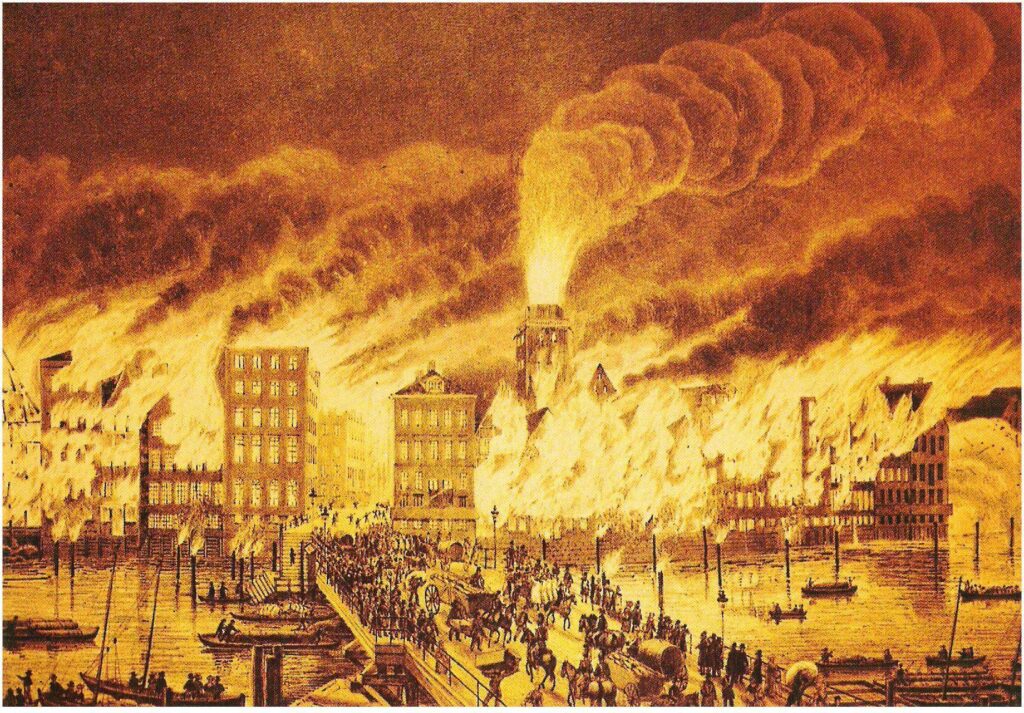
The Fire Fund had to take out a 46-year bond to pay off its share of claims: over 34 million DM (German marks) worth of damage. Despite the city of Hamburg thinking it was prepared, it turned out they had too much risk consolidated in too few places. Several smaller insurance companies that took on the risk of building contents didn’t survive this catastrophic loss. Thus, reinsurance was born.
2. 1906 San Francisco earthquake
By 1906, San Francisco was a vibrant port city and cultural center with a large military presence. When this now-infamous earthquake struck on April 18, 1906, it sparked fires that soon destroyed about 500 city blocks and left approximately 200,000 San Francisco residents without homes. The quake and, to an even larger degree, the subsequent fires resulted in $235 million of insured losses, though only about $180 million of that was paid out in claims due to lack of funds.
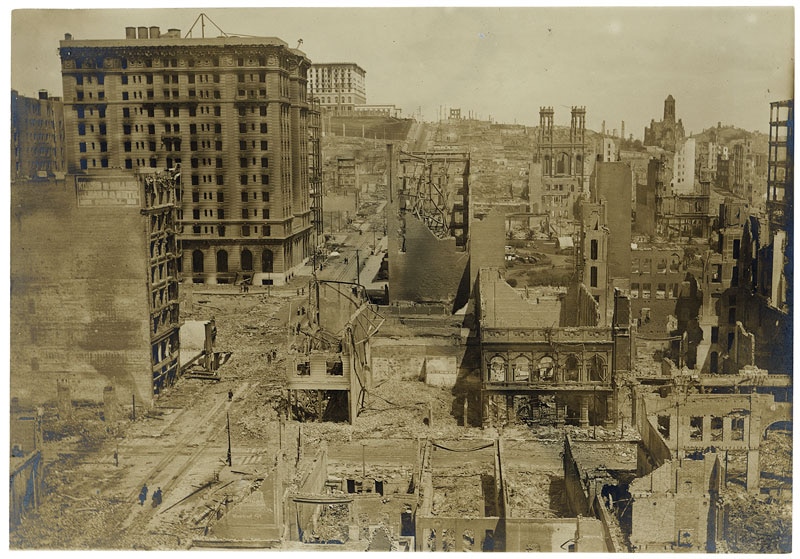
Although Lloyd’s of London came through as an insurance hero in this natural catastrophe thanks to its ability to fully pay all of its claims, at least 12 U.S. insurers and two European insurers went bankrupt. The I.I.I. reports insurance losses from the San Francisco earthquake basically negated 47 years of insurance industry profits.
3. Hurricane Andrew
Few, if any, insurance professionals predicted the extent of damage Hurricane Andrew would inflict on Florida in 1992. Despite earlier warnings from a single voice, Karen Clark, some of the world’s largest insurers sold unreasonably cheap policies to property owners up and down Florida’s coast.
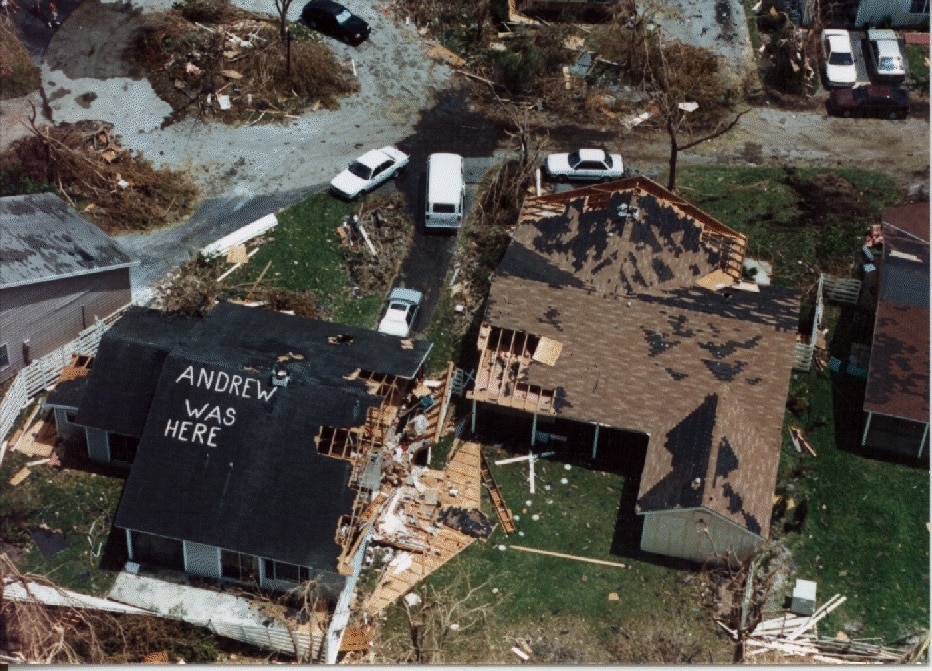
When Hurricane Andrew struck, Clark’s data model predicted damages of $13 billion, or more, if structures hadn’t been built strictly up to code. Lloyd’s of London estimated all insured property damage to be, at most, in the realm of $6 billion. In reality, it was more like $15.5 billion, proving Clark’s modeling to be accurate, and demonstrating the industry’s overly-optimistic views of catastrophic storm risk were unrealistic. Seven domestic and one foreign insurer (referring to those domiciled in- and outside Florida, respectively) became insolvent due to their losses. Hurricane Andrew remains the second most costly natural disaster to the insurance industry, beat out only by Hurricane Katrina.
4. Hurricane Katrina
Normally, hurricanes do most of their damage while the storm is in full force. No one, especially no one within the insurance industry, expected the devastation Hurricane Katrina brought to New Orleans and the surrounding areas after the skies cleared. It wasn’t the hurricane itself, but the storm surge and destruction of levees intended to hold water back that created this $161 billion catastrophic event.
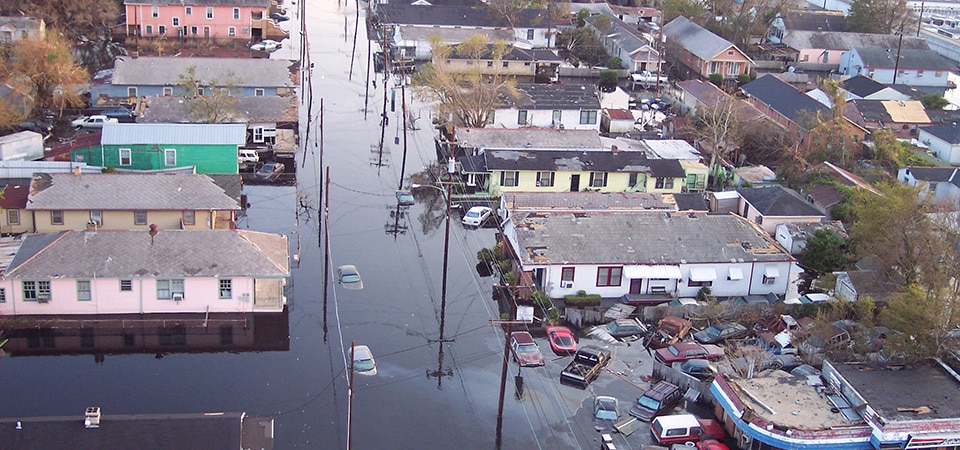
Hurricane Katrina remains the No. 1 most costly natural disaster in U.S. history when its damages are inflation-adjusted for today’s dollars. Like Hurricane Andrew before it, the industry wasn’t prepared for what the I.I.I. calls the “largest single loss in the history of insurance.” And, like so many of these major natural catastrophes, it’s hard for the industry to recoup its losses as one single event wiped out 25 years of homeowners insurance premiums and every bit of profit made by insurers in Louisiana.
5. COVID-19
It’s no surprise that the insurance industry wasn’t ready for a pandemic. Few insurers offered, and few businesses bought, specific pandemic coverage prior to 2020. That left many businesses filing large business interruption insurance (BII) claims, and insurers arguing that business shutdowns due to a virus weren’t covered under their BII policies. (Side note: If you’re interested in keeping tabs on the legal battles, The University of Pennsylvania has created a nifty litigation tracker to do just that.)
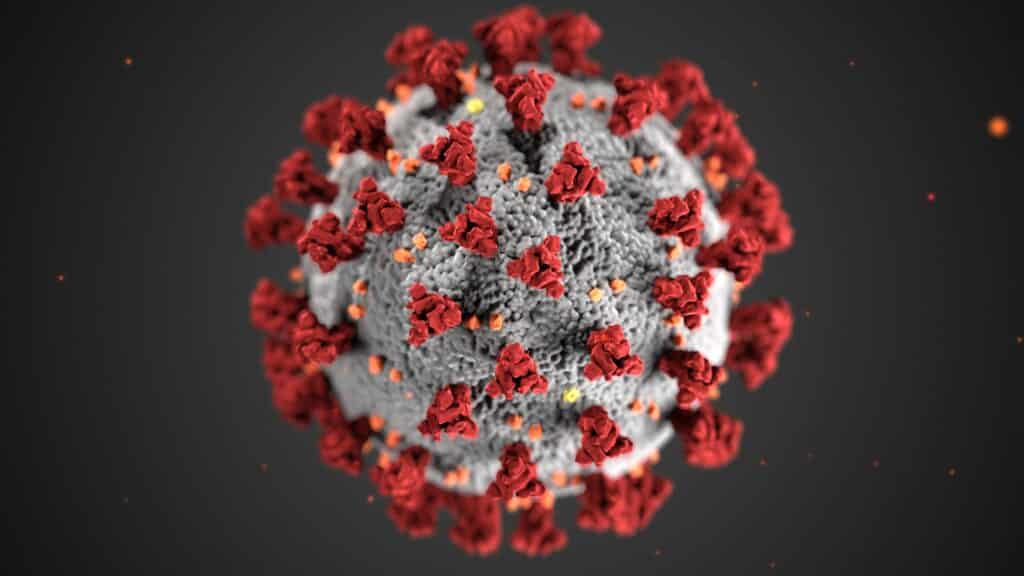
What may surprise you is that COVID-19 has resulted in the third-largest catastrophic loss to insurers, trailing only behind Hurricane Katrina and the 9/11 terrorist attacks. Despite many insurers maintaining that COVID-19 shutdowns don’t qualify as business interruption under their policies, insurance carriers have still paid a cumulative $40 billion to businesses with BII policies that filed claims during COVID. On top of that, the life insurance sector paid over $90 billion in claims in 2020, driven by over 300,000 COVID-19 deaths in that year alone.
Industry consensus is that catastrophic losses are on the rise and, undoubtedly, carriers and agencies will need to be nimble to respond to whatever regulation or market circumstances come next. There’s a lot you can’t control, including Mother Nature. But if you’re looking to be lighter on your feet to onboard producers, streamline workflows, and reduce costs and compliance risks, these are just a few of the things you can definitely control using AgentSync.
